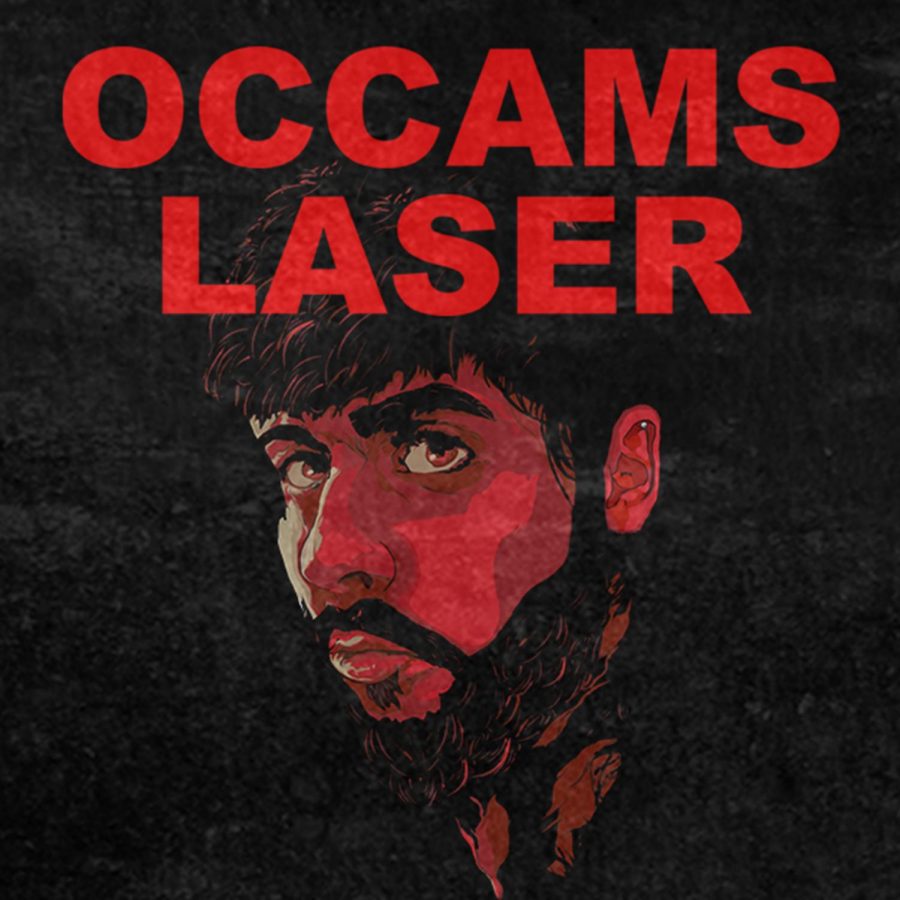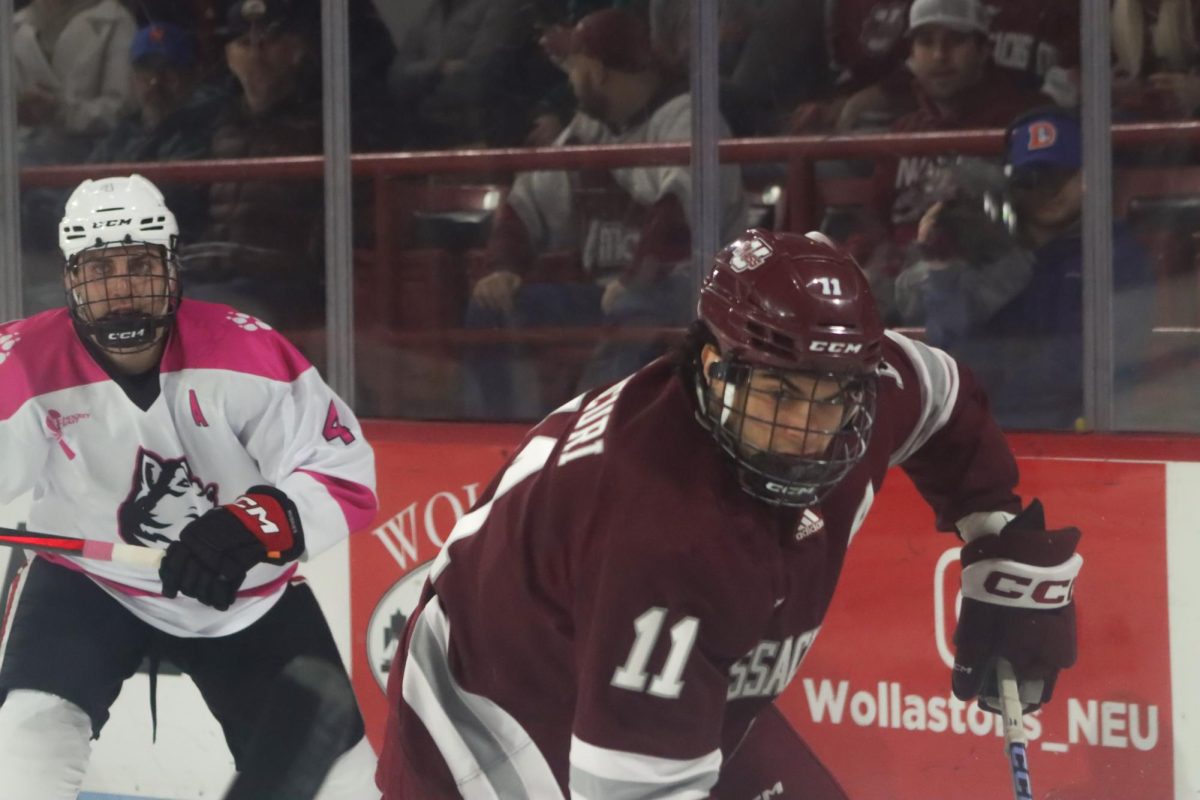Rhythmic aggression. That’s how I would describe the music of UK-based “darksynth” artist Occams Laser. His top track on Spotify is “Quarantine,” which came out in 2018 but is aptly named for current events. His work is complemented by striking red and black Gothic imagery exemplified by works titled “Crucifixion,” “Flagellation” and “The Four Horsemen.” Occams Laser is worth a listen for anyone looking for a new, intense and unique sound.
Ben Connolly: What’s your favorite color?
Occams Laser: Red.
BC: How would you describe your music to the layman?
OL: I would say my music is a mix of retro synthesizers and 80s horror soundtracks, with the added influence of cyberpunk and modern electronic music.
BC: Who or what inspires you to create?
OL: I can be inspired by a whole range of things. Sometimes, it’ll be very directly from a film or film series. Other times I can find inspiration just from an image, book or epic poem (as with my divine trilogy being based on “The Divine Comedy”). As long as there is a story that I feel I can tell through my music, then I’ll pursue that concept to completion.
BC: You do have many works that reference occult or old gothic terms, do you find those aesthetics to be integral to the darksynth genre?
OL: I have around 25 albums and EP’s and I’d say around half have direct references in at least some way to occult imagery and gothic terms. For me, the iconography that goes along with these kinds of things is so strong and it helps to quickly build an atmosphere visually. But my spin on “occult” has always been almost like a horror “B-movie.” Nothing is taken too seriously. As I understand, a lot of darksynth artists came from a metal background which explains why these occult elements are so prevalent. Darksynth would survive without these elements, but yeah, they are pretty much commonplace by this point.
BC: What do you think about the genre’s association by some as retro or nostalgic for the 1980s?
OL: At its core, synthwave is music trying to feel like it has the charm and sometimes simplicity of electronic music that originated in the 80s. The implementation of instruments or VST [virtual instruments] of synths that were prevalent in the 80s is the key to quickly producing sounds that can be considered nostalgic, and you’d be hard pressed to find a track that doesn’t have at least one 80s synth or drum sound in synthwave. I don’t think the association with the 80s should be considered negative though. If anything it makes writing music easier as your tools are already slightly pre-defined.
BC: Do you feel the terms synthwave and darksynth are interchangeable?
OL: I think synthwave and darksynth should be thought of more like day and night, light and dark. They may share elements but fundamentally the difference you’ll find is tone, synthwave having a generally happier tone and darksynth being far more melancholic.
BC: Given the variety of names artists in this genre use to classify their music, what do you like to call your music and why?
OL: For the majority of my music, I’d say it’s firmly rooted under the umbrella of darksynth. However, I do flirt with other styles from time to time such as with my recent album “Return to the Grid,” which is much more of a cinematic/synthwave score. However, if I had to categorize my music 10 years ago it would just all be called “Electronic Music.” It’s funny how the larger genres get, the more they have to be split up and be pushed into sub genres upon sub genres. It’ll be interesting to see how many fragments will come out of darksynth in the future that I may have to re-categorize under.
BC: What theme and ideas are you trying to express in your music?
OL: A constant theme that runs through all my music is the duality of good and evil. A lot of my tracks may have a minor tone to them to start, but then transform with some sort of burst of energy to that of a more hopeful and happy tone. I tend to write mini stories to go along with each album or EP I create and almost all of those stories deal with ideas that mix happily between the light and dark. I think it’s this middle ground that leads me to have perhaps more creative freedom and explore in multiple styles. The link with good and evil is another reason why some of my projects have dabbled slightly with religious ideas and stories; nothing simpler to mirror light and dark than God and the Devil, although again this is never in a truly serious vein and always with a slight tongue-in-cheek usage.
BC: Could you pick one of your favorite tracks and provide some background and details regarding its technical and thematic aspects?
OL: One of my favorite tracks which was a complete happy accident is “Quarantine.” The track is from my album “New Blood” from 2018 which had a loose story of a synthetic blood that was slowly taking over the human population (seems quite fitting with recent events). The reason I like the track so much is because it started off with a joke about how much distortion I could put on one instrument. In the end I had seven different layers of distortion and, for whatever reason, I thought it sounded great. The album launched semi-successfully and everything went by as normal until six months later, when the track was used by Dr. Disrespect in a livestream and instantly became my most listened to track on Spotify, which is still true to this day. What this process made me realize is that sometimes you need to try mad things to achieve new sounds and this is something I try to do as much as I can.
BC: Can you elaborate on the importance of your visual aesthetic, such as your album covers?
Or [do you not] find the visuals particularly important?
OL: Visuals are very key to music in my opinion. As listeners tend to see album art way before even hearing the music; it’s the first impression a listener has before even pressing play and if the art isn’t intriguing or inviting then you’ve already lost the battle. Since day one, I’ve created all my own album covers, sometimes this actually takes longer than writing the music. I’m by no means the best illustrator or designer, but it’s just another layer that I like to add to each album. My hope is that this all leads to a more complete experience where you are truly seeing and hearing from my perspective.
BC: Do you often do live shows, like concerts?
OL: To date I have only played one live show, back in 2018 at Retro Future Fest in London. It was a fantastic gig with one hell of an amazing crowd! I haven’t ruled out playing live again, but it is quite a time commitment with practicing, travel, etc. as I live in quite a remote part of the UK. For now it’s more that I’m waiting for the right event to come back out of the shadows.
BC: Why do you think the darksynth scene is still underground, despite the popularity of many tracks and artists?
OL: Instrumental music in general tends to find it hard breaking through to the mainstream, and the majority of darksynth is definitely instrumental. It’s a very rare day when you hear an instrumental on the radio (other than classical music of course). The other main reason, and kind of weird thing, is that there doesn’t seem to be even one record label specializing in darksynth. Blood Music would have been the closest, but they were primarily metal. Without label support or the contacts in the music industry that larger labels sometimes have access to; artists have to pay for their own promotion, production, music videos and merch. This ultimately means it’s unlikely the average artist can promote an album to the point of mainstream success. But in the end, darksynth was always meant to be in the shadows and I think that’s the best place for it to survive and thrive.
BC: What are some events you have coming up? And how may readers find out more about you?
OL: There was a possibility of another gig this year in August, but right now that’s uncertain. What is certain though is more music! I’m just finishing my next album and have 2 more in production as well. I’m pretty easy to find on twitter/Facebook/Instagram but for all my music; occamslaser.bandcamp.com is the place to go!
Ben Connolly can be reached at [email protected].



















